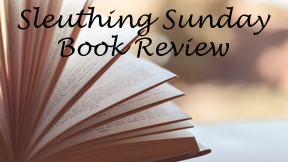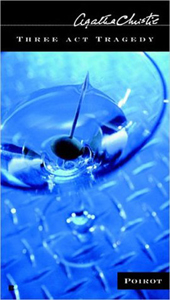There are two types of mystery readers: Those who view the book as a puzzle they must solve, and those who read it for the journey. I’m in the latter group, rarely stopping to think – like Poirot does, sometimes setting aside an entire 24 hours for the process – about whodunit.
Still, I sometimes subconsciously form a guess, and “Murder in Three Acts” (also published as “Three Act Tragedy,” 1935) is unusual among Agatha Christie in that I figured out whodunit, and the author doesn’t even seem like she’s trying to trick anybody.
Life as a performance
Nonetheless, I enjoyed reading it, because I’m all about the journey. “Three Acts” doesn’t have the strictest three-act structure, as the amount of pages for each of the three “acts” is wildly different. But Christie does tap into the notion of life as a performance, particularly via Sir Charles. A middle-aged famous actor, Charles teams up with best pal Sir Satterthwaite (who is introduced in “The Mysterious Mr. Quin”) to probe the death of a reverend at Charles’ dinner party.

“Murder in Three Acts” (1935)
Also published as: “Three Act Tragedy”
Author: Agatha Christie
Genres: Mystery, romance
Series: Hercule Poirot No. 10
Setting: Cornwall, 1935
Because the Rev. Babbington has no enemies, it must be an accidental death – even Poirot thinks so at first – despite signs pointing to a poisoned drink. When psychiatrist Bartholomew Strange (yes, “Dr. Strange,” but not that one) dies at another dinner party in the same manner, Poirot joins the case, now convinced they are both murders. Still, Charles, Satterthwaite and young Hermione Lytton Gore (nicknamed “Egg,” but no, not that one) do a lot of the investigating, too.
“Three Acts” boasts lots of angles to approach the mystery from. Most intriguingly, cause and effect don’t seem to line up. Logically, Strange should’ve been the first murder and Babbington the second. Someone with enemies would naturally be killed first, and an innocent person with too much knowledge would be killed in the wake.
The character writing is solid, as Christie gives us a good historical peek into the notion that young women desiring older men – and vice versa — was common in 1930s London. While the woman being the younger half of the relationship is still common, people of that era did not balk at an extreme age gap. So a potential romance between Charles and Egg, with the amused Satterthwaite watching them circle each other – is a primary thrust of the novel.
The final act (Spoilers)
To discuss the final act, I’ll need to institute a SPOILER WARNING here.
I thought from the start – at least in the back of my mind – that “Three Acts” was about someone staging murders like a play. And that turns out to be the case. Going by that theory, Sir Charles isn’t the only suspect, as playwright Muriel Wills and actress Angela Sutcliffe are also in the storytelling trade, but he’s the obvious one, and it turns out the correct one.

As such, “Three Acts” has traits of the “Oh, that’s what was really going on” mysteries such as “The Murder of Roger Ackroyd.” We get cleverly written scenes wherein the meaning becomes different if the point-of-view is flipped – notably an encounter between Wills and Charles. The first reading is that Wills is acting suspicious to Charles’ eye, but the correct reading is that Wills is suspicious of Charles.
Another rare trait of this novel is that Charles comes close to actually being that stray “lunatic” or “madman” that observers assume is the killer early on in Christie mysteries, giving readers a trope to laugh at because it’s never a random killer. (And this is true in real life, too. Most murders are committed by someone known to the victim, someone with a motive. Random purposeful killings are rare.)
As with her shaky take on drug addiction in “Peril at End House” (which also has theatrical flourishes), Christie’s portrayal of a crazy person isn’t exactly robust. Partly that’s because it wouldn’t do for us to know Charles is crazy ahead of time, but I also feel like the author is a naïve on the subject – which, admittedly, was a rather new topic of study at the time. Still, this being an exercise in page-turning plotting, Christie can take a deserved bow for “Murder in Three Acts.”
Every week, Sleuthing Sunday reviews an Agatha Christie book or adaptation. Click here to visit our Agatha Christie Zone.

